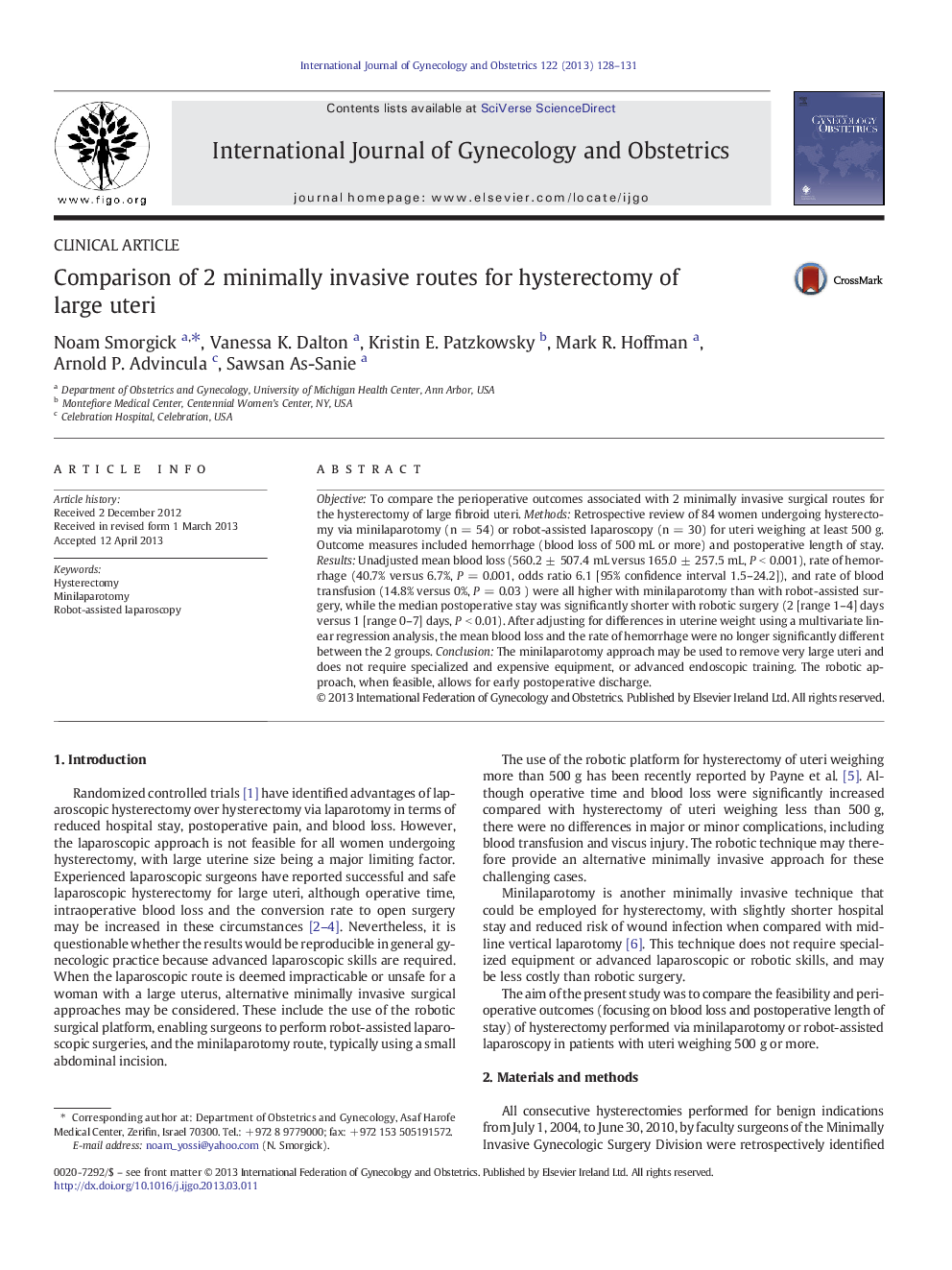| Article ID | Journal | Published Year | Pages | File Type |
|---|---|---|---|---|
| 3952182 | International Journal of Gynecology & Obstetrics | 2013 | 4 Pages |
ObjectiveTo compare the perioperative outcomes associated with 2 minimally invasive surgical routes for the hysterectomy of large fibroid uteri.MethodsRetrospective review of 84 women undergoing hysterectomy via minilaparotomy (n = 54) or robot-assisted laparoscopy (n = 30) for uteri weighing at least 500 g. Outcome measures included hemorrhage (blood loss of 500 mL or more) and postoperative length of stay.ResultsUnadjusted mean blood loss (560.2 ± 507.4 mL versus 165.0 ± 257.5 mL, P < 0.001), rate of hemorrhage (40.7% versus 6.7%, P = 0.001, odds ratio 6.1 [95% confidence interval 1.5–24.2]), and rate of blood transfusion (14.8% versus 0%, P = 0.03 ) were all higher with minilaparotomy than with robot-assisted surgery, while the median postoperative stay was significantly shorter with robotic surgery (2 [range 1–4] days versus 1 [range 0–7] days, P < 0.01). After adjusting for differences in uterine weight using a multivariate linear regression analysis, the mean blood loss and the rate of hemorrhage were no longer significantly different between the 2 groups.ConclusionThe minilaparotomy approach may be used to remove very large uteri and does not require specialized and expensive equipment, or advanced endoscopic training. The robotic approach, when feasible, allows for early postoperative discharge.
